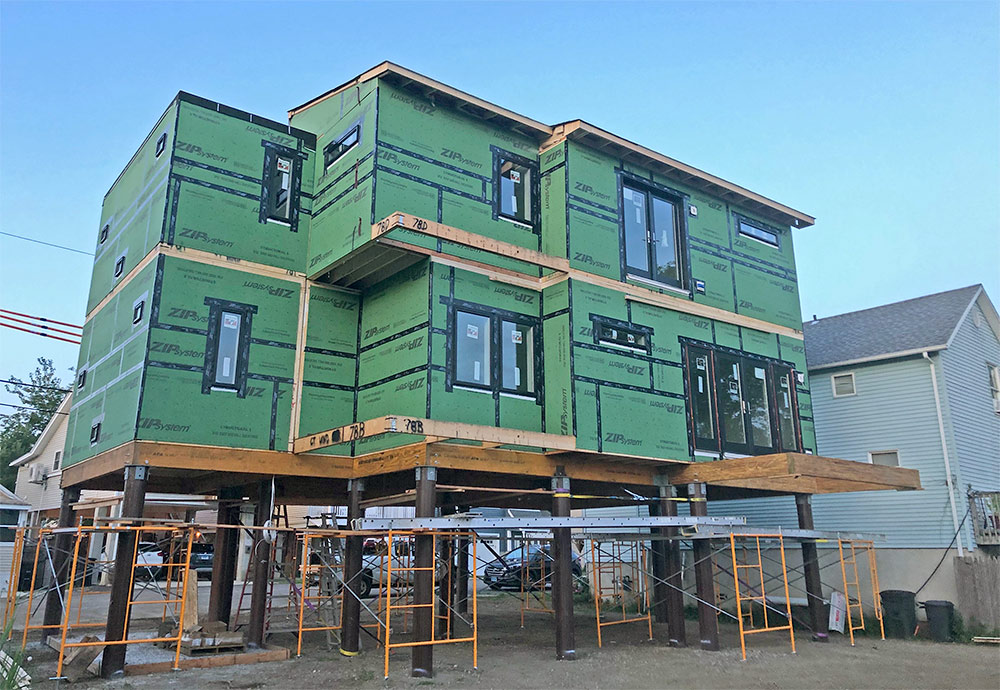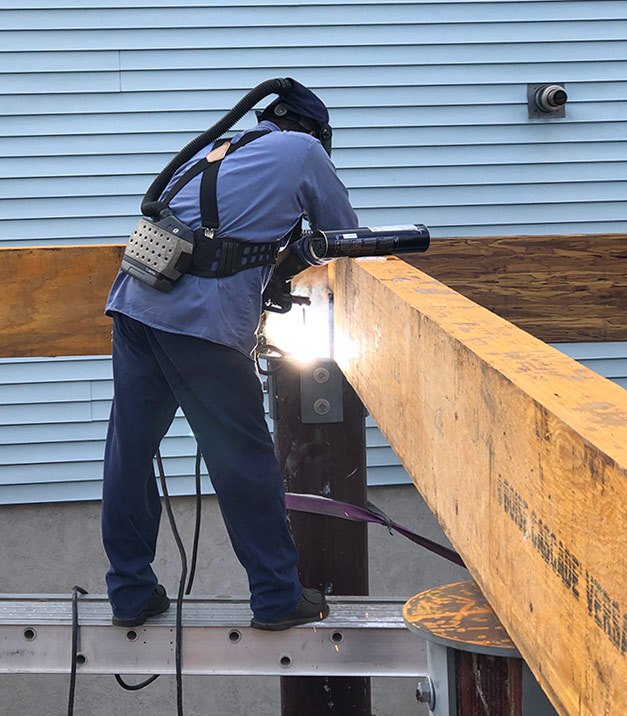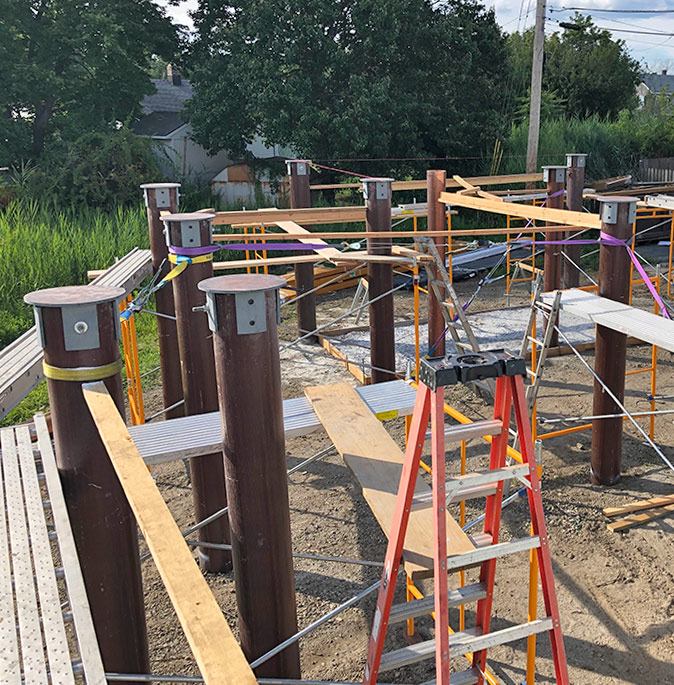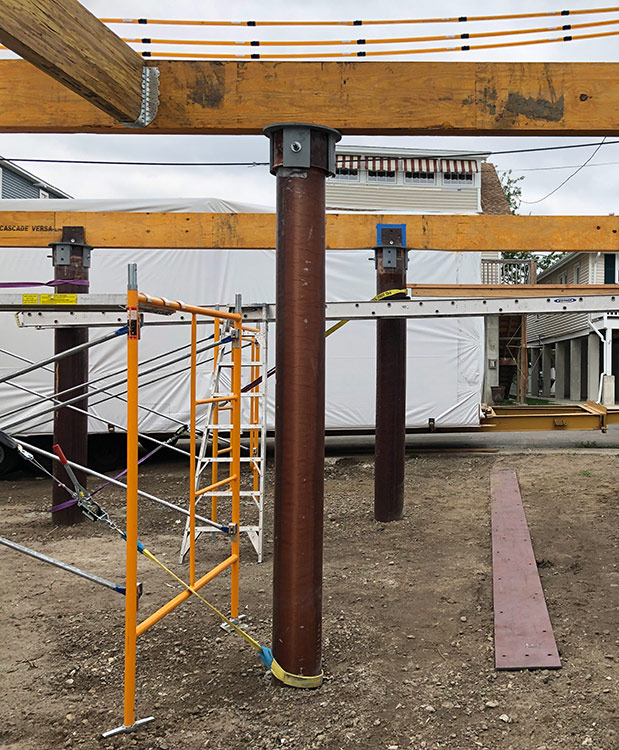Making a Connection: Faros Design and Pearson Pilings partner to help waterfront homes stand up to storms
Milford, CT
Pearson Pilings and Faros Design, Milford, CT are partnering to build coastal homes that withstand severe weather. As two coastal construction entrepreneurs in New England, Mark Pearson and Faros Design founder Aviel Suarez hit it off immediately. “We were very synergetic just even from a personal standpoint,” recalls Aviel of their “organic relationship.”
Both businesses also include multiple generations: Aviel started Faros Design in partnership with his father, Ozzie. So when Aviel contacted Mark to learn more about incorporating Pearson Pilings into his modular waterfront homes they soon began collaborating.

Superior product
Aviel knew he wanted to use Pearson Pilings in upcoming projects. “They are far superior to anything else going on in the coastal environment,” he explains, regarding storm-resistance and structural integrity. “In those types of environments you have to take additional measures to make sure the pilings last.” Without the right pilings, even the most secure structure can collapse when faced with severe weather.
Aviel and Ozzie named Faros Design after the Spanish word for lighthouse. The image of a beacon represents Faros Design’s goal: “simplifying the process for the end consumer” by lighting the way through the “many overwhelming choices” involved in home building. By serving as the architect, contractor, sub-contractor, and engineer they streamline the process and empower the homeowner. Faros also focuses on “alternative resources and sustainability,” another reason Aviel was drawn to Pearson Pilings.
“Conventional foundations are a much greater disturbance to the environment,” he explains. Pearson’s hollow fiberglass pilings “do not require any excavation and you don’t want to de-water,” he notes, in order to preserve the coastal substrate. Plus the process takes less time since “installation is faster than with concrete or wood piles.”
New standards of strength
Conventional pilings are also vulnerable to rot if they are wooden and to crumbling if they are concrete. By building coastal development to withstand greater force, Faros Design and Pearson Pilings are “creating new standards as to what should be implemented in these types of structures,” asserts Aviel. “Maybe it’s over-engineering” for everyday use in a coastal environment, but it means “having the peace of mind that your investment is protected” in the case of severe weather. “Not to say it’s 100% hurricane resistant,” he clarifies, but it has a “much higher resilience than anything I have seen implemented in the Northeast.”


Innovation in the industry
Until Pearson composite pilings, there “hadn’t been a lot of innovation involved with individual pilings systems, or new products,” says Faros Design president, Aviel Suarez. He wanted to build on (literally and figuratively) the innovations of Pearson Pilings and develop a connection system that would link the pilings with the initial structure without compromising strength.
“Mark has a great product,” explains Aviel. “So I wondered, ‘How do you implement that in a simple manner, for a house foundation, dock system, whatever structure is being put on pilings.’ In the process of working out the logistics of how to use his product, we developed this solution together.” This connection system featuring a “pile cap that ties everything together,” helps integrate the strength and resilience of Pearson Pilings with the structure above it.
“Now we can combine the Pearson system with conventional house building from a logistical standpoint.” The result was a new product with a personal connection. “I lost my father at the beginning of last year,” explains Aviel. “We were granted a patent at the beginning of this year. So in honor of my father, I called it the Ozzie Cap.”
The test of time
The cap attaches securely to the pilings with plates that can be welded to the structure above, unitizing the attachment, or making it all one piece. According to Aviel, the system is “far superior in terms of strength and easier in point of attachments.” Plates attached to the sides ensure the structure is “tied down in both axises.”
Aviel is so confident in the system he used it in his own home. While it has yet to be tested by a hurricane or severe storm, he is also confident the opportunity will arise, since when it comes to summer storms, “it’s a matter of when it’s going to happen, not if it is going to happen.”
“Working with Farros Design to develop a faster, more secure attachment system for Pearson Pilings started out as a challenge to build a better coastal property,” recalls Pearson Pilings president, Mark Pearson. “Now we have the technology to incorporate storm-resistant Pearson Pilings into a wider range of projects, keeping even more families safe.”
Interested in protecting your waterfront investment by building a stronger coastal home? Contact Pearson Pilings to get started.


Pearson Pilings are far superior to anything else going on in the coastal environment.—Aviel Suarez, Faros Design, Milford, CT
